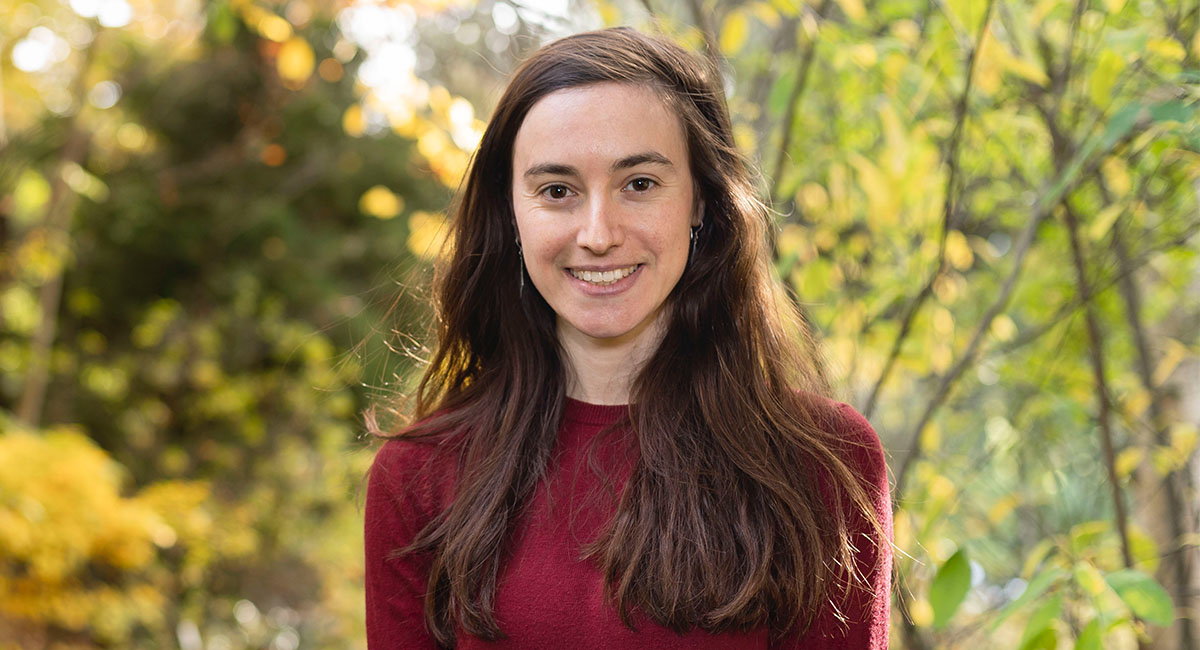
For University of Washington School of Public Health alum Rachel Shaffer (MPH, ’18, Ph.D., ’20), the notion of public health has always been present. Her parents both worked as infectious disease epidemiologists, and living in Thailand with her family opened her eyes at an early age to the connection between the environment and human health.
In this Q&A, Shaffer, who is also an affiliate assistant professor in the Department of Environmental & Occupational Health Sciences, shares how her experiences at UW SPH helped prepare her for working at the U.S. Environmental Protection Agency and her recent assignment with the White House Council on Environmental Quality. She also shares her advice for students entering the public health workforce.
Tell us the story of when you first became interested in public health.
With two parents working as infectious disease epidemiologists at the U.S. Centers for Disease Control and Prevention, public health has always been a part of my life. The early seeds of my interest in the link between the environment and health were planted when my family lived abroad in Bangkok, Thailand, when I was a young child. In college, my interests crystallized further as I discovered the field of environmental public health, which was a natural fit for my long-standing interests in (and concern for) the environment and human health. It’s wonderful to be working in a space where I can advance policies and programs that improve both the natural world and human health.
What experiences at UW SPH have been most influential or have helped prepare you for the public health workforce?
I was able to develop the right combination of depth and breadth during my time at UW SPH. I have enormous gratitude for my Ph.D. advisor, Professor Lianne Sheppard, who challenged me to develop key technical and quantitative skills as I dove into my dissertation topic on air pollution and dementia. Yet Lianne also gave me wonderful freedom to pursue side projects that allowed me to satisfy my curiosity about a wide variety of topics in the field and practice applying my skills across different scenarios. The work I do today requires me to apply my technical foundation and expertise to new situations on a daily or weekly basis, so I’m grateful that my training prepared me to feel comfortable in a landscape of constant new challenges.
You’ve been working at the U.S. Environmental Protection Agency (EPA). What are you most proud of?
My work on human health assessments in the EPA Office of Research and Development’s Integrated Risk Information System (IRIS) is a critical bridge between research and policy. When we assess priority chemicals, we systematically evaluate and synthesize the evidence base (hundreds or thousands of studies) to identify the health effects associated with exposure and the levels of exposure at which those effects occur. I’m proud to be working on this important step of the research translation process; our influential assessments are used to inform policies and programs across the EPA as well as at state and local health agencies across the country.
Tell us about your recent assignment at the White House.
It’s been an incredible privilege and honor to work on advancing public health and environmental protections under the Biden-Harris Administration. I am part of the Chemical Safety and Plastic Pollution Prevention team at the Council on Environmental Quality (CEQ). This is the first time ever that CEQ, established in 1969, has had a specific team dedicated entirely to these issues, and my role is to advise on all topics related to chemical safety and human health. For example, I participate in the interagency review process for relevant federal agency regulations before they are published to ensure they align with Administration priorities on environmental public health. We also facilitate interagency coordination on key cross-cutting topics, such as per- and poly-fluoroalkyl substances (PFAS).
How does health equity play into the work that you do?
Achieving health equity is an inherent part of my work in environmental health. Environmental exposures are experienced disproportionately across the population, and they can alter lifelong trajectories of health and disease. Every person deserves a chance to reach their full potential, and my work to help translate scientific research and advance policies that ensure access to safe drinking water, clean air and healthy environments free of toxic pollution is an important step toward that vision.
What is your advice for public health students who will become our future public health leaders?
We are likely in this field because we care deeply about public health, so I probably don’t need to share advice about following one’s curiosity or passion. Instead, I’ll focus on some advice that feels very close to home given my experiences over the years: build relationships with those who can support you and advocate for you. I am deeply grateful for my mentors and colleagues who have been able to guide, challenge, teach and advise me as I have progressed on my path. I recognize that I wouldn’t be where I am today without them. I want to pay it forward for others who are looking to navigate the complexities of a career in public health, so don’t hesitate to reach out!
What interests do you have outside of (or related to) public health? Any extracurricular activities?
Even though I’m not living in the beautiful Pacific Northwest anymore, I try to continue many of the same outdoor activities that I enjoyed there such as hiking, biking and snow sports. I live right next to Washington, D.C.’s Rock Creek Park (which actually feels like a forest!), and I’m also slowly discovering some of the good nature spots outside of the city. On indoor days, I enjoy reading (microhistories are my favorite genre), cooking or catching up on the latest environmental health news and research (good fodder for my blog).